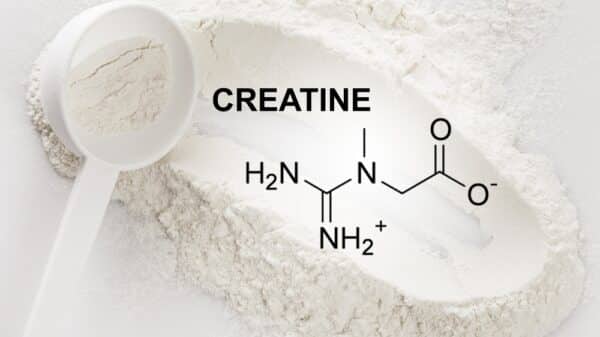Running is not just a popular form of exercise; it has become a lifestyle for many. However, despite its numerous health benefits, this activity can lead to various injuries. Recognizing the common types of running injuries, their symptoms, treatments, and prevention strategies is essential for anyone who wants to maintain an active, injury-free lifestyle.
Common Running Injuries
The most frequently encountered running injuries typically arise from overuse, improper technique, or insufficient warm-up and recovery. Here’s a closer look at the common disorders every runner should be aware of:
1. Runner’s Knee (Patellofemoral Pain Syndrome)
Overview: This condition manifests as pain around the kneecap, often occurring due to irritation between the patella and femur.
Symptoms: A dull ache around or behind the kneecap, with noticeable discomfort when walking downstairs, squatting, or remaining seated for extended periods.
Treatment: Treatment options include rest, ice, anti-inflammatory medications, physical therapy, and exercises aimed at strengthening the hips and quadriceps.
2. Shin Splints (Medial Tibial Stress Syndrome)
Overview: Characterized by pain along the inner part of the shinbone, shin splints particularly affect new runners.
Symptoms: Tenderness and soreness in the lower leg, often accompanied by mild swelling.
Treatment: Recovery strategies typically recommend rest, ice, compression, and switching to lower-impact activities before gradually resuming running.
3. Plantar Fasciitis
Overview: This injury is the result of inflammation of the plantar fascia, a tissue band stretching across the foot’s bottom.
Symptoms: Heel pain, especially noticeable upon waking or after prolonged periods of standing or activity.
Treatment: Recommendations include calf and plantar fascia stretching, supportive footwear, and sometimes physical therapy.
4. Achilles Tendinitis/Tendinopathy
Overview: A condition marked by inflammation of the Achilles tendon, connecting the calf muscles to the heel bone.
Symptoms: Pain and stiffness at the back of the ankle, persistent especially in the mornings or after running.
Treatment: Effective strategies include rest, eccentric calf exercises, icing, and wearing supportive shoes.
5. Iliotibial (IT) Band Syndrome
Overview: This syndrome arises from inflammation or irritation of the iliotibial band, running from the hip to the knee.
Symptoms: Pain on the outer knee that tends to worsen with activity, especially after downhill running.
Treatment: Suggested treatments involve foam rolling, strengthening exercises, stretching, and adjusting one’s training regimen.
6. Stress Fractures
Overview: These are tiny cracks in the bone, which can occur in the foot, shin, or hip, often due to excessive training.
Symptoms: Persistent localized pain that often intensifies with impact.
Treatment: Total rest is necessary, and in some instances, a boot or crutches might be required to facilitate healing.
7. Pulled Muscles and Strains
Overview: Commonly affecting the calves, hamstrings, and quadriceps, muscle pulls occur when muscles are overstretched or torn during activities.
Symptoms: Sudden pain, swelling, or weakness in the affected muscle.
Treatment: Managing these injuries often requires rest, ice, and gradual rehabilitation exercises.
Prevention Strategies
Avoiding running injuries involves a mix of strategic training approaches:
1. Proper Footwear: Investing in running shoes that provide adequate support and cushioning can significantly decrease injury risks.
2. Gradual Mileage Increase: Incrementally increasing running distances helps avoid overuse injuries.
3. Strength Training: Incorporating strength exercises can enhance muscle balance and reduce injury susceptibility.
4. Flexibility and Warm-Up: Engaging in proper warm-up routines and stretching post-run can improve flexibility and aid recovery.
5. Listen to Your Body: Honoring pain and taking rest days can prevent small issues from escalating into more serious injuries.
Conclusion
Awareness is the first step toward injury prevention in running. By understanding the common injuries, recognizing their symptoms, and implementing effective treatment and prevention strategies, runners can enjoy their passion for running safely. Remember, the key to a sustainable running journey is listening to your body and making necessary adjustments to your routine. Stay active, stay informed, and run safe!## Common Running Injuries: Identification, Treatment, and Recovery
Running can be an excellent way to stay fit, but it does come with its risks. Understanding common running injuries can help you manage them better when they occur. Here’s a detailed look into various injuries, their treatments, and essential recovery strategies.
Understanding Common Running Injuries
1. Muscle Strains
What It Is: A muscle strain occurs when muscle fibers are overstretched or torn.
Symptoms: You may experience pain, swelling, and difficulty using the affected muscle.
Causes: Often results from insufficient warm-ups, poor flexibility, or sudden movements.
Treatment: The RICE method (Rest, Ice, Compression, Elevation) is effective initially, followed by gradual stretching once pain subsides.
2. Sprained Ankle
What It Is: A sprained ankle involves stretching or tearing the ligaments around the ankle.
Symptoms: Common signs include pain, swelling, bruising, and difficulty bearing weight.
Causes: Commonly caused by stepping onto uneven surfaces or sudden turns.
Treatment: Similar to muscle strains, use RICE, and consider supportive bracing and physical therapy for full recovery.
3. Blisters
What It Is: Blisters are fluid-filled pockets that form due to friction on the skin.
Symptoms: They typically appear as red, raised bumps that can be painful or itchy.
Causes: Often caused by repetitive rubbing from footwear during long runs.
Treatment: Keep the area clean and protected with blister pads. Avoid popping the blister unless necessary.
4. Temperature-Related Injuries
What It Is: This category includes conditions like heat exhaustion or frostbite.
Symptoms: Heat-related injuries may cause dizziness and rapid heartbeat, while cold injuries can lead to numbness.
Causes: They often occur due to exposure to extreme temperatures without adequate hydration or proper attire.
Treatment: Move to a safe environment, hydrate, and seek medical assistance for severe symptoms.
5. Back Pain
What It Is: Pain may occur in the lower or upper back, usually due to spinal strain.
Symptoms: A dull ache or sharp pain may radiate to the hips or legs.
Causes: Factors include poor posture, weak core muscles, and inadequate footwear.
Treatment: Focus on core-strengthening exercises, stretching, and posture correction to alleviate pain.
6. Piriformis Syndrome
What It Is: This syndrome occurs when the piriformis muscle compresses the sciatic nerve, often causing pain in the glutes.
Symptoms: Pain or numbness in the buttocks, aggravated by running or sitting.
Causes: Overuse or tight hip muscles can lead to this condition.
Treatment: Targeted stretches, foam rolling, and physical therapy are beneficial for recovery.
Recovery Strategies
Recovery from running injuries varies based on severity and type. Here are general principles for a successful recovery:
1. Rest and Modify Activity
Take breaks from activities that cause pain and switch to low-impact exercises like swimming and cycling. This approach not only aids recovery but also keeps your cardiovascular health in check.
2. Ice and Compression
Using ice packs and compression techniques can significantly reduce inflammation and swelling. This practice is crucial immediately after the injury occurs.
3. Seek Professional Guidance
A physical therapist can tailor a rehab program to address your specific issues, focusing on muscle imbalances and stability.
4. Gradually Return to Running
Once you are pain-free, carefully reintroduce running. Gradually increase your mileage—no more than 10% per week is generally advisable.
5. Invest in Proper Gear
Proper footwear is essential for a healthy running experience. Custom orthotics or supportive braces might also be necessary for your recovery.
When it comes to maintaining optimal performance and reducing injury risk, soft tissue work is an essential component for runners. Whether you’re an experienced athlete or just starting, the guidance of a professional, such as an athletic trainer or a massage therapist, can make a significant difference in your body mechanics. These professionals understand how to identify and alleviate muscular imbalances, knots, and tension, which can lead to improved performance and decreased risk of injury.
The Importance of Professional Assessments
It’s not uncommon for runners to have subtle muscular imbalances that go unnoticed. For instance, if you have one leg that’s shorter, continuous running may exacerbate stress on one joint more than others. This imbalance creates a cycle that can lead to discomfort and injuries. By consulting a qualified professional—be it an athletic trainer or chiropractor—you can receive personalized guidance to correct these issues, ensuring that your body works harmoniously.
Conclusion
Understanding and addressing running injuries promptly is key to staying on track and avoiding medical intervention. Whether you’re battling common issues like shin splints or simply looking to enhance your performance, adopting preventive habits is vital. Listen to your body, follow structured recovery plans, and, above all, prioritize your health. Making informed choices will help you enjoy the myriad benefits of running for years to come.
Image Source: Unsplash
































